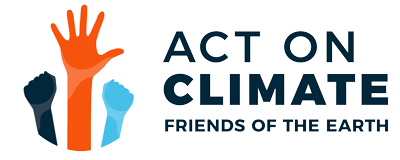We’ve all heard the alarms: climate change is coming. Someday in the future it will drown our cities, burn our houses and eat our children – someday. However according to the #ClimateImpactsVic map, climate change is not coming – it is already here. And that’s what we need to discuss.
The map is the latest project from Friends of the Earth that aims to identify the frontlines of the climate crisis, that is, those who are the first affected by its impacts. While its findings certainly do not yet depict the doomsday scenario we often imagine, they are nevertheless highly disturbing. We should all be concerned for our fellow Victorians who are already starting to feel the impacts.
There is hardly a region of the state that has escaped the wide-ranging consequences of climate change. From agriculture to tourism, no industry is spared.
The map shows that Victoria’s agriculture industry is most under threat. The industry is worth over $14 billion but temperature rises are seriously threatening the sector. Some of the reports include, stories of avocado growers losing 90 per cent of their crop over the summer due to heat waves; wineries seeing their harvests start earlier than normal resulting in lower quality produce; and grain farmers experiencing huge yield decreases. Animal agriculture too has been affected with egg productivity down and livestock such as chicken and cows dying due to persistent heat stress.
Animals outside of the agriculture industry have been particularly hard hit; many species have seen changes in phenology and several are now facing extinction. For instance, the emergence time of butterflies, which highly depends on temperature, has shifted by 10 days since 1945. This puts the entire species at risk of losing synchronicity with their food source. Meanwhile, wildlife populations from the Alps to the Grampians have reduced significantly. In Victoria pygmy possum numbers are down 87 per cent since 1996 and brolga numbers have declined in the west of the state. In fact, Victoria has the highest number of threatened species of all states and territories in Australia.
From land to sea, nowhere is free from a warming planet. Sea life looks vastly different than it did in the recent past. Victorian waters are increasing in temperature faster than anywhere else in Australia, spurred on by a 350km extension of the East Australian Current; our sea surface temperatures have been above the long-term average for the past 26 years in a row. These changes have seen a myriad of tropical fish enter Victorian waters that would not normally travel further south than New South Wales, including manta rays, bull sharks, tiger sharks, yellow-bellied sea snakes, sea urchins and many more. Consequently our cool water ecosystems have been profoundly altered, most notably by with the huge losses to our kelp forests, down 90 per cent in Port Phillip Bay.
Coastal erosion was revealed as the other big change to the Victorian landscape in Friends of the Earth’s frontlines map. Citizen scientists in Inverloch recorded losing 39 metres of coastline since 2012. However, it is not just Inverloch sounding the alarm about the impacts of sea level rise. Community members in Port Fairy, Queenscliff, Point Lonsdale, and Apollo Bay have all noted big changes.
The case studies featured on the #ClimateImpactsVic map mean that discussions around climate change are no longer just about melting ice caps and polar bears but also about the present, tangible impacts at a local level.
Scientists have long been reporting what is happening at a global scale. They have warned us how the bleaching of coral reefs is connected to climate change. But what’s happening in our own backyard is such an important part of the discussion. Why? For one thing, our communities matter. On another level however, the local and short term are likely to garner more attention from our politicians. Our system is designed that way; politicians are highly incentivised to care about their local electorate and issues impacting within the next three to four years.
With case studies on the map coming in from almost every electorate held by Victorian cabinet ministers, it is now inescapable that politicians must consider climate change a present-day issue. Every decision they make – from roads to hospitals – ministers have to think about how they how they can make sector-wide emissions reductions. Or they must explain to their electorate why they are willing to put extra pressure on people already feeling the heat.
Aaron Brooks is a member of Friends of the Earth Melbourne’s Act on Climate collective. The #ClimateImpactsVic map can be viewed here.
